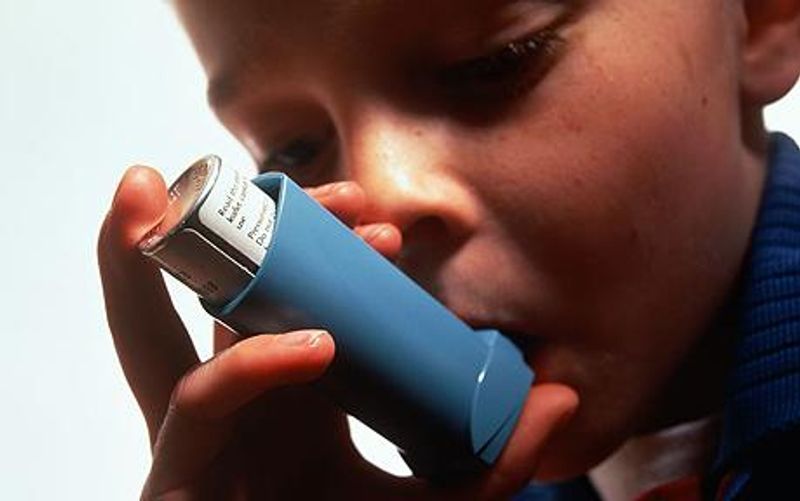Dupilumab reduces severe asthma exacerbations in children
The LIBERTY ASTHMA VOYAGE trial of dupilumab met its primary and key secondary endpoints in children aged 6 to 11 years with uncontrolled moderate to severe asthma, according to a press release.
Dupilumab (Dupixent, Sanofi/Regeneron) significantly reduced asthma exacerbations and improved lung function as early as 2 weeks after the first dose, compared with standard of care, in a broad population of children with type 2 inflammatory asthma, according to findings of the phase 3 trial.

The randomized, double-blind, placebo-controlled, phase 3 LIBERTY ASTHMA VOYAGE trial evaluated the efficacy and safety of dupilumab, a fully human monoclonal antibody that inhibits signaling of the interleukin-4 and interleukin-13 proteins. Dupilumab 100 mg or 200 mg every 2 weeks was assessed in addition to standard-of-care maintenance therapy of medium-dose inhaled corticosteroid with a second controller medication or high-dose ICS with or without a second controller medication in 408 children aged 6 to 11 years with uncontrolled moderate to severe asthma. More than 90% of children in the trial had at least one concurrent type 2 inflammatory condition, including atopic dermatitis and eosinophilic esophagitis, according to the release.
Primary analyses were based on 259 patients with baseline eosinophils of 300 cells/µl or greater and 350 patients with markers of type 2 inflammation (baseline eosinophils 150 cells/µl or FeNO 20 ppb). There was no minimum biomarker requirement for enrollment, according to the release.
At 52 weeks, dupilumab reduced asthma exacerbations by 65% in the 100 mg group (P < .0001) and 59% in the 200 mg group (P < .0001) compared with placebo. Lung function improved at 12 weeks with dupilumab compared with baseline by 10.15 and 10.53 percentage points in the 100 mg and 200 mg groups, respectively, compared with 4.83 and 5.32 percentage points in the placebo group (least squares mean difference for dupilumab vs. placebo of 5.3 and 5.2 percentage points; P = .0036 and P = .0009, respectively), according to the release. The improvement in lung function was observed as early as 2 weeks and was sustained for up to 52 weeks, according to the release.
Researchers observed safety results consistent with the known safety profile of dupilumab in children aged 12 years or older. Overall rates of adverse events with dupilumab were 83% compared with 80% with placebo. The most common adverse events were injection-site reactions (dupilumab, 18%; placebo, 13%), viral upper respiratory tract infections (12% and 10%, respectively) and eosinophilia (6% and 1%, respectively).
U.S. and European Union regulatory submission for children aged 6 to 11 years is planned by first quarter 2021, according to the release.
“Dupixent is the only biologic shown in a controlled phase 3 trial to improve lung function in children, which is generally consistent with results seen in the adolescent and adult trials,” John Reed, MD, PhD, global head of research and development at Sanofi, said in the release. “These positive data are especially encouraging for younger children who are struggling to manage their uncontrolled asthma.”
“Children with moderate to severe asthma live with a heavy and unpredictable disease burden. Even while taking maximum treatments including inhaled corticosteroids, they suffer from multiple asthma attacks each year that may require hospitalization,” George D. Yancopoulos, MD, PhD, president and chief scientific officer of Regeneron, said in the release. “These impressive phase 3 data in children with asthma show Dupixent significantly reduced annual severe asthma attacks and also improved lung function consistently across patients with markers of type 2 inflammation.”
